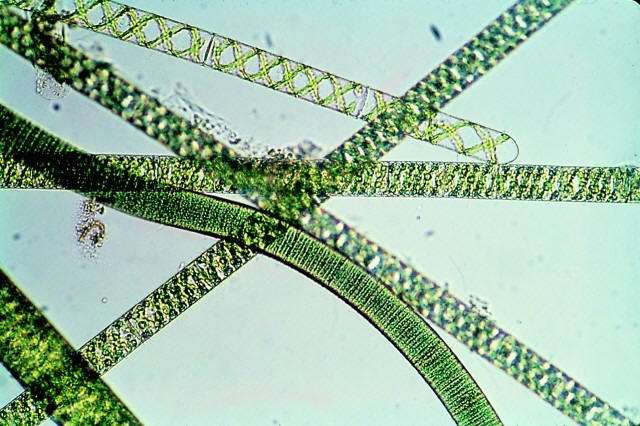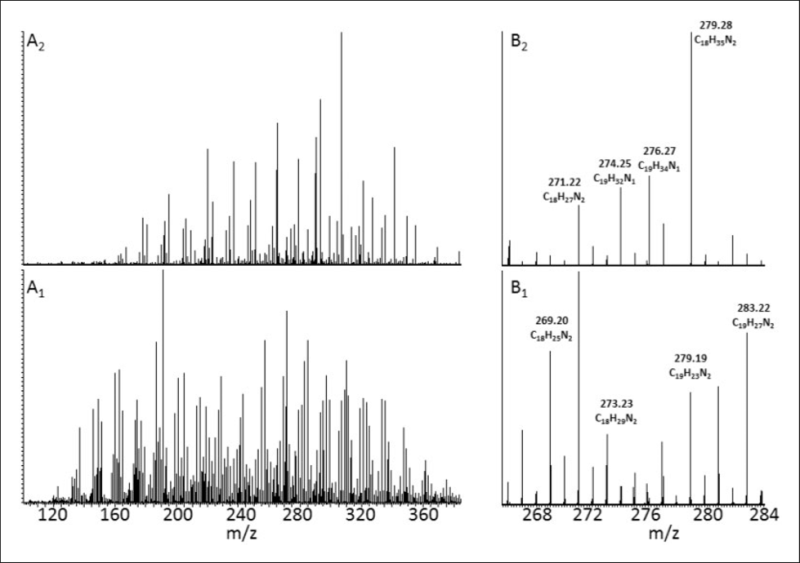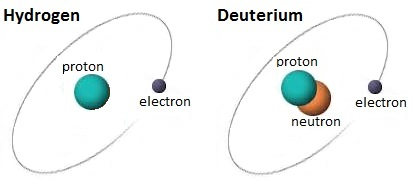Scientists determine algae biofuel composition

Scientists have used high-resolution mass spectrometry to determine the composition of a biofuel obtained from the microalgae Spirulina platensis. The researchers studied two biofuel fractions obtained using a special algal mass treatment method. The researchers also proved that biofuel has little to do with oil in terms of its composition. However, it is similar to the "brilliant green" antiseptic commonly sold in Eastern Europe. The results of the study were published in the European Journal of Mass Spectrometry.
The research project was conducted by a group of scientists from Skoltech, the Joint Institute of High Temperatures of RAS, the V. L. Talrose Institute of Energy Problems of Chemical Physics of the Russian Academy of Sciences (RAS), the N. M. Emanuel Institute of Biochemical Physics of RAS, Lomonosov Moscow State University, and the Moscow Institute of Physics and Technology.
Algae functioning as an ecology recovery method
As an alternative source of energy, biofuel is of particular interest in research projects, as it could potentially solve such problems as the depletion of oil reserves and global warming. Unlike oil, biofuel is produced from renewable natural resources, and when it is burned, fewer greenhouse gases are released. Brazil, for example, already provides 40 percent of its energy needs with biofuels. Agricultural crops and other plants are used as a raw material for biofuel production. However, production requires the use of fertile lands that could otherwise be used for the production of food.
The most promising raw materials for biofuel are marine microalgae, which require neither pure water nor land to be grown. Algae actively absorb carbon dioxide, and therefore reduce the greenhouse effect. Fuel from microalgae is called third-generation biofuel, and development for its production is currently underway.
Biofuel recipe

With sufficient information on the composition of biofuels, researchers can significantly improve production processes. The original techniques for producing fuel from algal mass proved to be energetically unfavorable since much energy is spent on drying the algae, which contain water. A new and more efficient method was needed for commercial use. Now, researchers have developed hydrothermal liquefaction—wet biomass is heated to a temperature of more than 300 degrees Celsius and compressed at a pressure of 200 atmospheres; the output is fuel. This is analogous to what happens in nature when high temperatures and high pressures lead to the formation of oil deep in the Earth. However, in the reactor, this process occurs more quickly. The result is two fractions: liquid biofuel and a thick mass remaining in the reactor. Both fractions are mixtures of thousands of individual components, and mass spectrometry is the best way to determine their composition.
Mass spectrometry
Mass spectrometry is an analytical technique used to determine the composition of a substance. It is based on the fact that different compounds behave differently in an electric and/or magnetic field, depending on their mass-to-charge ratio, or m/z. The analysis produces a mass spectrum—a graph - intensity vs. m/z, with intensity of peaks proportional to the number of particular m/z ions.

Scientists used mass spectrometry to investigate biofuel obtained from the Spirulina platensis algae. During hydrothermal liquefaction, all substances with a boiling point below 300 degrees C leave the reactor as gases and are subsequently cooled in a special container. Thus, the liquid fraction is extracted, while the solid fraction remains in the reactor. The mass spectrometry analysis procedures that were then conducted showed that both fractions contained the greatest amount of those substances with nitrogen (N) and dinitrogen (N2) in their composition. The substances found in the biofuel are not similar to those contained in conventional crude oil, although they are combustible. Mass spectrometry provides information on the molecular formulae of substances only (for example, C18H35N2). To find out about the structure of the molecules, the researchers used a method known as a hydrogen-deuterium exchange.
Replacing hydrogen with deuterium
When hydrogen is replaced with deuterium, the mass of an ion becomes larger, and the peak in the spectrum is shifted. By determining whether the peak is displaced or not, scientists can tell where hydrogen was located within a molecule. However, not any arbitrary position occupied by hydrogen can be freed.

Before starting the mass analyses, the sample molecules are ionized. In this case, protons were added to neutral compounds, or electrons removed, turning them into positive ions. It is possible to substitute hydrogen atoms of the molecules (as well as attached protons) with a deuteron. However, it was discovered that in some hydrogens in some components of biofuel elements, the replacement does not occur. The scientists came to realize this by considering the intensity of the shifted peak obtained in the course of the replacement procedure. If the displaced peak had the same intensity as the nondisplaced peak, it meant that a complete replacement took place. If the intensity of the displaced peak is less, it means that several compounds were registered under one peak, and not all of them had an attached hydrogen that could be replaced by deuterium.
Professor Evgeny Nikolaev of Skoltech, who is a corresponding member of RAS and the head of the Ion and Molecular Physics Laboratory at MIPT, says, "The investigation of hydrothermal liquefaction products of microalgae by means of mass spectrometry is important for increasing the efficiency of biofuel production. Further work needs to be focused on the application of algae varieties with the highest possible lipid content and growth rate and the creation of such varieties using genetic modification methods. This will allow us to find the most effective raw material for biofuels."
More information: European Journal of Mass Spectrometry. DOI: 10.1177/1469066717702648
Provided by Moscow Institute of Physics and Technology




















